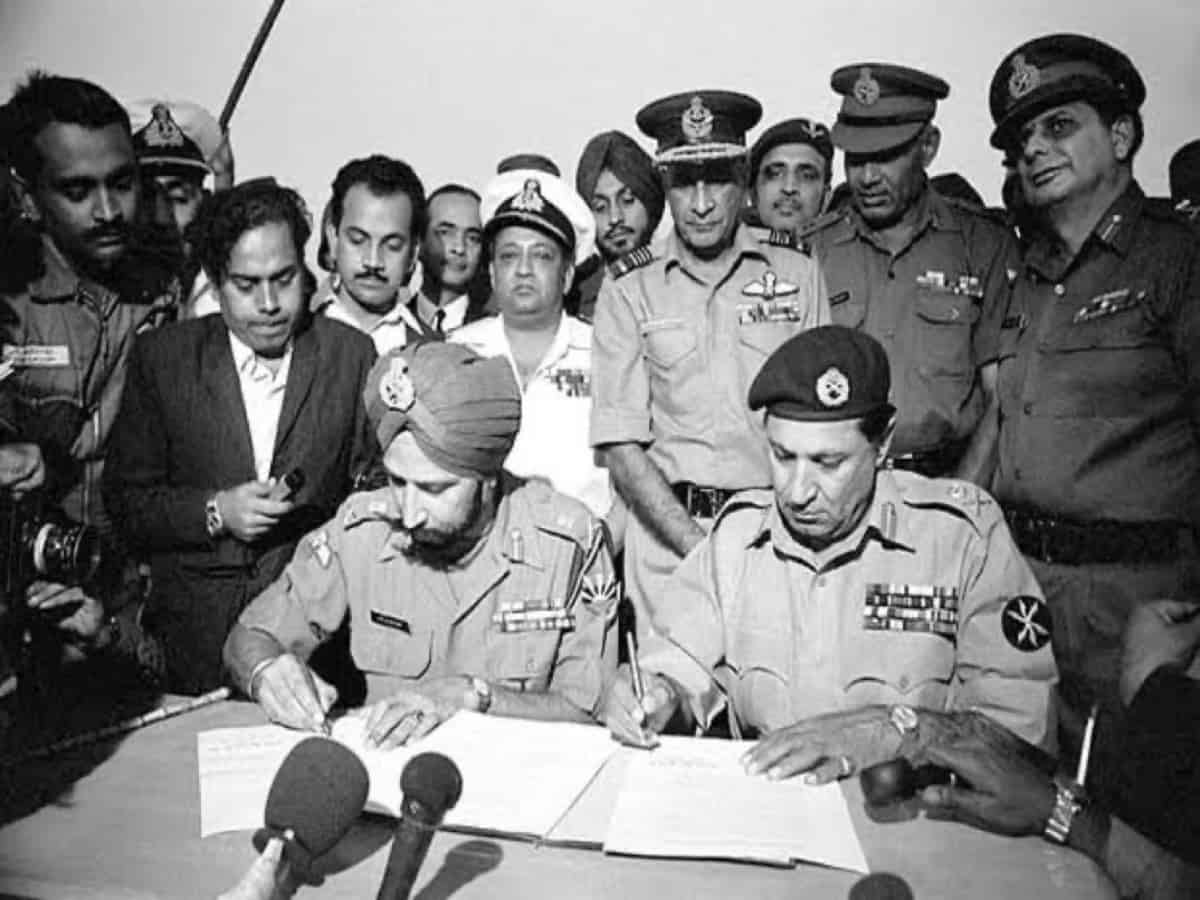The partition of India in 1947 brought into existence two countries, India and Pakistan, and a subsequent long-standing conflict between them. The two neighbours have been at loggerheads, engaging in a conflict at various intervals. Beginning from the low-intensity conflict in 1948, right after the formation of the two states, Kashmir became a contentious issue.
In 1965 the two countries went face to face after Pakistan initiated Operation Gibraltar, to depose militants into Kashmir. The Indian army launched a full-scale war, attacking West Pakistan. This led to the largest armoured battle since the end of World War II. The two countries agreed on a ceasefire, after the intervention of the United States of America (USA) and the Union of Soviet Socialist Republic (USSR).
With the conflict between the two neighbouring countries in mind, one could better understand the nitty-gritty of the 1971 war, out of which the country of Bangladesh was born/liberated.
The domestic conflict in Pakistan
It was initially an internal conflict in Pakistan between the Bengali minority of the East and the ruling elite of the West. The Bengalis made up 52% of Pakistan’s total population. In 1948, the Language Movement was initiated with a demand to include Bengali as an official language. Civil society protested the deletion of the Bengali script from the currency notes, which was present since the British Raj.
The conflict was apparent by 1952. On February 21-22 that year, an offensive was launched by Pakistan armed forces, killing a large number of students and other civilians. The conflict deepened further after General Yahya Khan refused to convene the parliament after the 1970 Prime Ministerial elections.
The Awami party in the east led by Shaik Mujib ur Rehman, emerged victorious against the Pakistan Peoples Party of General Zulfiqar Ali Bhutto. The election results had major implications for both sides of the country since the triumphant party was supposed to write the third constitution of Pakistan. The Awami Party, as part of its six-point agenda, called for greater federalism; separate convertible currencies; fiscal responsibility to be delegated to the federating units; as well as the right to maintain a separate militia. Each of these demands came in response to the west’s cultural, economic, and linguistic oppression; exclusion from the military and bureaucracy; as well as consistent and calibrated efforts to deprive Bengalis of their legitimate share of political power.
The Union government in the west led by General Yahya and Zulfiqar Ali Bhutto, advocated strong federalism, viewing the Awami League six-point agenda as a demand for secession. Despite securing meagre seats, Zulfiqar Ali Bhutto refused to participate in a parliament constituted with the Awami League in power.
Shaik Mujibur Rehaman refused to back down and stood firm on his right to form a government. Looking at the firm demand, General Yahya initiated Operation Searchlight, an offensive to crush the demand. The consequences of the offensive forced a mass refugee influx into India.
The refugee crises and the Indo-Pak war
The mass refugee influx into India led to a proxy war between the two countries. India faced a major challenge in terms of launching an offensive. The first was monsoon and the riverine terrain into what we now call Bangladesh, which made it incredibly tough to launch any operation at that time.
India also had to take China out of the equation so that it couldn’t help its all-weather ally, Pakistan. India had to wait for the winters so that the Chinese couldn’t access the mountains. Apart from the meteorological and geographical challenges, India also had limited weaponry to fight a full-fledged war.
The Indian government had to persuade the US and USSR to intervene and prevent Pakistan from the evident ethnic cleansing, which in turn took a toll on India. The US President Richard Nixon and his advisor Henry Kissinger paid no heed to India’s demand. It is to be noted that the US granted aid to the country dealing with the refugees.
Pakistan’s offensive against India
In November 1971, General Sam Manekshaw informed Prime Minister Indira Gandhi of the army’s state of preparedness to move across the border and to back Mukti Bahini fighters. India’s move had a major impact on Pakistan’s sense of security.
The neighbouring country launched operation ‘Chengiz Khan’, attacking 11 of India’s air bases on the Western front on December 3. The attack marked the beginning of a 13-day war between India and Pakistan, which went on till December 16. It resulted in the fall of Dhaka to the combined forces of India and the Mukti Bahini.
India’s response to the offensive
In response to Pakistan’s offensive, India launched Operation Trident, targeting the Karachi port. The offensive was launched using the Soviet anti-ship Ballistic missiles. It caused a major damage to Pakistan’s naval strength. To commemorate the operation, each year December 4 is observed as Navy Day.
The 1971 war displayed the impeccable coordination between the air, ground, and naval forces of the Indian armed forces for the first time in a full-scale war since independence.
The basic plan of the armed forces was to launch a short and effective offensive, to ensure minimum loss of lives. The Indian forces worked in coordination with the Mukti Bahini, in order to have a better understanding of the terrain. It helped them to approach the situation better, and to launch the offensive through farm fields, and other unconventional areas. The aim was to reach Dhaka as early as possible, to enforce the surrender.
Pakistan’s Surrender
The chief of Pakistan’s Eastern Command and Chief Martial Law Administrator of East Pakistan, Lt. Gen. AAK Niazi called for a ceasefire. However, India’s General SHFJ Manekshaw, along with other officials called for a public surrender of 93,000 Pakistan troops.
Left with no choice, General Niazi inked the Instrument of Surrender on December 16, 1971. This marked the end of the Bangladesh Liberation War and gave birth to the state of Bangladesh.

